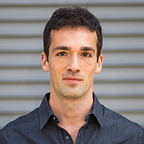Founder Stories: Democratizing RNA sequencing with Brad from Amaryllis
The last decade has seen massive advances in our ability to gather genetic data through DNA sequencing. However, that DNA does not tell us what’s actually happening in living cells which is critical to continue advancing personalized medicine, crop research, and more. For this we need to understand RNA.
Our ability to do RNA sequencing is facing fundamental bottlenecks right now due to cost, speed and accuracy. Brad Townsley, co-founder and CEO of Amaryllis Nucleics, has created new RNA sequencing chemistry that breaks these bottlenecks and will enable us to understand living systems like never before to accelerate personalized medicine and research.
A: Tell me about your background, how did you get interested in the biotech space?
B: It all started when I first saw a glowing tobacco plant on the cover of a science magazine back in 1986. I was so wowed with the possibilities that biotech held to make virtually anything possible. So as an undergad at UC Davis I studied genetics and started to actually see the type of direct impact biotech is capable of. From there I decided to do my PhD in Plant Biology since it seemed like the best way to apply biotech to real world problems.
A: What problem are you working to solve with your company, Amaryllis?
B: A huge bottleneck in biotech and research is reading out the information of what living cells are doing, which is found in RNA. We’re making that easily accessible by making RNA sequencing cheaper, faster, and more accurate. RNA sequencing is already changing industries like agriculture and medicine by broadening our knowledge base. As we expand use of this tool we’ll be able to do things like detect disease before symptoms appear, know what chemotherapies a patient will respond to before they’re dosed, and find many other ways to increase quality of life and lifespans.
A: So after spending so much time at UC Davis, what inspired you to start Amaryllis?
B: Academia is a great place for figuring out how things work, but it’s harder to make real change because you work for years on a technology, publish on it, and then sit around and wait for people to find and use it. Application is just not that common.
Doing a startup allows us to get this great technology out to the world and have direct impact. We originally developed this to satisfy our own need, and then realized how many people it could help. We saw how this would actually democratize RNA sequencing, which is crucial to understanding how living systems work, and really accelerate research discoveries and insights.
A: So how do you think success can change your industry?
B: Making RNA sequencing truly accessible will allow more scientists to use it frequently to get deeper answers. There are people who simply can’t do research right now because of cost. People are forced to use blunt instruments to ask their questions. Instead of knowing what every gene in the genome is doing, they only know about one or two due to the quality of the tools available.
A: How is your team uniquely able to tackle this? What’s the expertise?
B: Mike, my co-founder, and I used RNA sequencing so much we actually discovered the initial chemistry by accident after reverse engineering it in an experiment. We were able to do that since we have such complementary skillsets. We’re both molecular biologist, but I focus on bench biology and he’s a bioinformatician. Combining these skillsets allowed us to see the chemistry taking place and figure out how to utilize it.
It really helps that most of our customers are a lot like us. We’ve used RNA sequencing since its early days and know many of the issues people have using it. Fundamentally we get the end user since that used to be us.
A: Any big lessons learned transitioning from academia to startup entrepreneurship?
B: The sense of time is completely different. You have to act immediately in a startup, go after your best options right away, and live with some level of risk. It’s been hard to adjust, but I keep getting more and more comfortable moving fast. I didn’t realize it in academia, since that slow pace was just the way things were. Now as an entrepreneur I know I’m in charge of my destiny and need to act accordingly.
A: What’s the biggest challenge you’ve encountered so far?
B: Making decisions with knowing what the right decision is, which goes hand in hand with moving fast. It’s overriding the instinct to do nothing and wait since the right answer won’t just show up. You have to get used to acting. There’s constant risk reward ratio calculation and I’m learning to quickly sort through all the options to find what seems best quickly. I’ve gotten more comfortable with it each time and expect that to continue as we keep facing more challenges.
A: What are the big goals and milestones you’re looking to hit in the short term? Long term?
B: Getting our product adopted by large sequencing core facilities is really important in the short term. Several are trying us out, and we want to become the main supplier. It would be a huge milestone since they are a really strong signal due to their high volume of RNA sequencing. Long term, seeing this folded into diagnostics for early detection of disease would be huge. We see this as a major application for this technology to accelerate personalized medicine and stopping disease before it starts.
You can reach Brad at bradtownsley@amaryllisnucleics.com
Are you a scientist looking to build the next generation of biotech companies? Apply to IndieBio San Francisco
Tune into our livestream to see Brad pitch at Demo Day on July 14th
